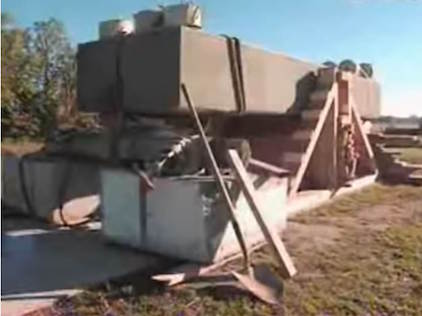Some of you may be familiar with Wally Wallington and his techniques for moving Stonehenge-like blocks (up to 19,000 pounds) with ropes, little rocks, wood, and his own effort. No metal, no machines, no engines. Just clever use of levers and wedges. If you haven’t seen him at work, take 6 minutes to watch this video:
Simple machines like levers and wedges offer a mechanical advantage. They permit you to spread out a force over time and distance. If you want to move a big rock, you don’t have to just lift it with one direct heave, possibly throwing out your back. Instead, you can gradually lift it a little at a time by using a long lever arm. You exert a doable amount of force over a period of time, and it has the power of a larger spurt of force.
Anyone see a parallel to the thinking tactics I teach?
You have a certain amount of mental power you can exert. Try to exert more mental effort, and you’ll experience strain. That is just as self-destructive as straining your back. Maybe more so, because if you associate strain with your most important work, you start to fear and resist the most important work you do.
Various tactics such as “thinking on paper”* help you use that mental power across time. Maybe you get stuck trying to answer a question in one shot. No problem, break it down into doable steps using a thinking tactic. Then, eventually, you can answer it. Thinking tactics are the equivalent of those wedges and rocks and pieces of wood. They help you apply your thought to one thing at a time. Each step is a bit of movement toward the answer to your question.
Here’s the crucial point to take from this analogy:
Strain is the signal you need more leverage. All thinking should flow. All mental lifting, just like all physical lifting, should be in the range that is comfortable for you and doesn’t throw out your back.
In mental lifting, just like physical lifting, you should never “try harder” when you’re already experiencing strain. That’s how you injure yourself.
What Wally has shown is that you also don’t need to get a lot of other people to help, or a big machine. You can do an awful lot with just your own effort — if you take advantage of leverage.
That’s what tactics like Thinking on Paper do, too. They help you transform the task into something you can move ahead with under your own brainpower. They support independent thinking.
Yes, you can answer Stonehenge-scale questions, if you spread out the thinking over time using a thinking tactic. And of course, if it’s worth it to you to spend your time working on that Stonehenge-scale issue.
*Thinking on Paper is explained in my freebie, Multiply the Power of Thought. Click here to find out more. Many more thinking tactics are taught in my classes and the Thinking Lab.









0 Comments